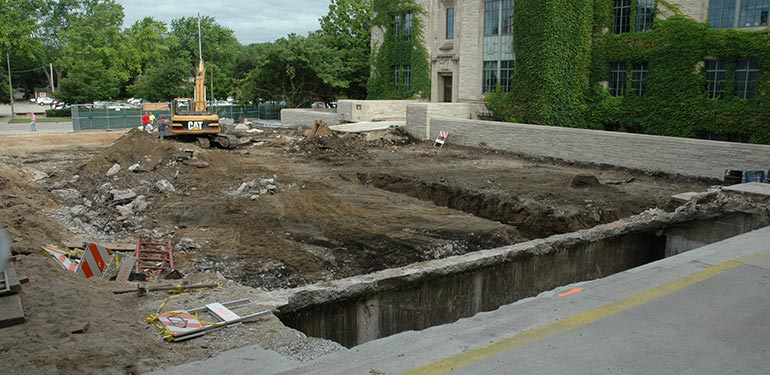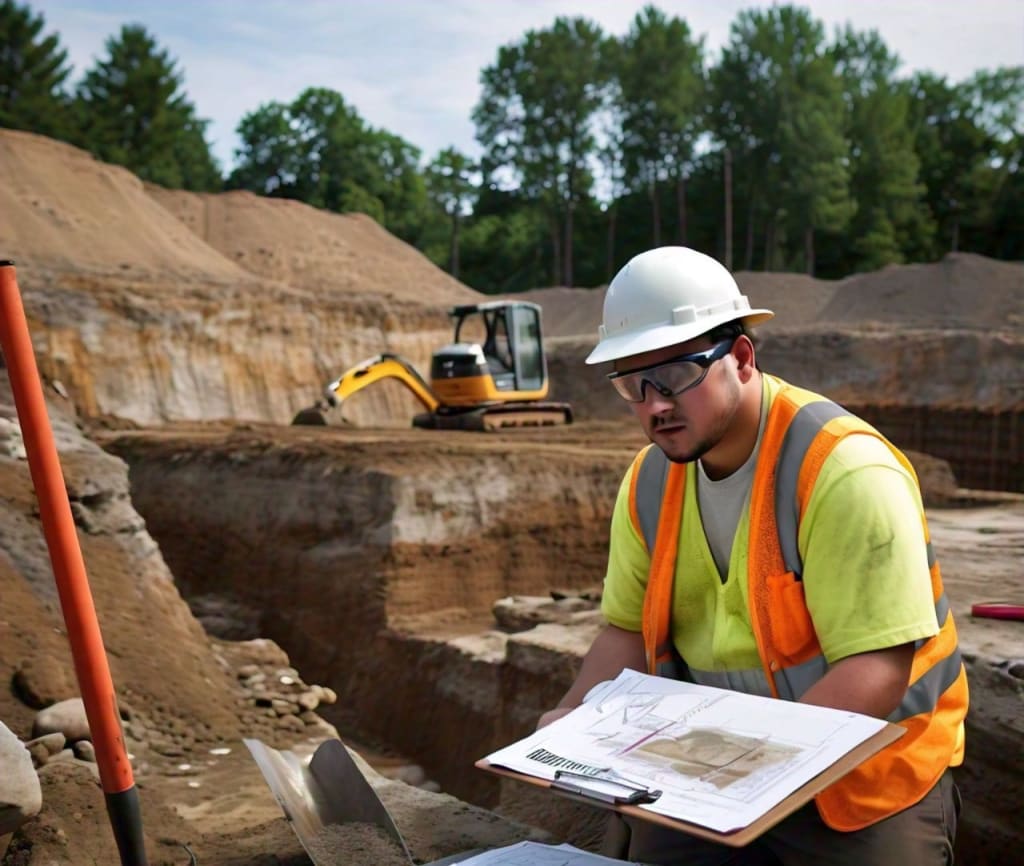Project Geotechnical Engineer for Tailored Site Analyses
Project Geotechnical Engineer for Tailored Site Analyses
Blog Article
A Thorough Examination of the Services Offered by Consulting Engineers in the Field of Geotechnical Design: From Website Investigation to Task Execution
Consulting engineers in geotechnical engineering play a crucial function in the effective implementation of building and construction jobs, beginning with detailed website investigations that reveal crucial subsurface problems. Their competence prolongs to dirt home analyses, ecological effect analyses, and the cautious tracking of job application, guaranteeing alignment with safety and security and sustainability standards.
Significance of Geotechnical Engineering
Geotechnical engineering is a vital self-control that underpins the safety and sustainability of civil infrastructure tasks. By recognizing the mechanical habits of soil and rock products, geotechnical designers analyze the suitability of websites for different buildings, including buildings, bridges, and dams. This basic analysis guarantees that frameworks can hold up against ecological elements and lots without experiencing failure.
The importance of geotechnical design prolongs beyond mere architectural security; it additionally incorporates environmental stewardship. Appropriate geotechnical assessments add to lessening the eco-friendly influence of construction. Through careful examination of soil properties and groundwater problems, designers can develop foundations and maintaining structures that reduce risks such as disintegration and landslides, promoting long-lasting security.
Additionally, geotechnical engineering plays a vital role in project expense administration. geotechnical works. By determining prospective concerns early in the design phase, designers can recommend suitable services, thus staying clear of costly hold-ups and redesigns during building and construction. This positive technique not only improves project efficiency however additionally dramatically lowers risks related to unforeseen website problems
Website Investigation Methods
Efficient website investigation methods are necessary for gathering exact data about subsurface problems prior to building and construction. These techniques promote the understanding of the geological and hydrological atmosphere, which is crucial for making certain the stability and safety of recommended frameworks.
Typical approaches employed in site investigations consist of borehole exploration, which enables designers to draw out dirt examples at various depths, providing insights right into stratification and material types. Furthermore, geophysical surveys, such as seismic refraction and electric resistivity, offer non-invasive methods to examine subsurface attributes over larger areas. These techniques can aid identify abnormalities without substantial excavation.
Test pits are an additional valuable technique, giving straight monitoring of dirt layers and allowing in-situ screening. geotechnical works. This strategy is particularly valuable for superficial excavations and can aid assess groundwater levels. Cone infiltration examinations (CPT) are progressively used, as they provide continuous profiles of dirt resistance, which helps in determining dirt stamina and layering.
Each of these strategies plays a vital role in developing an extensive understanding of website problems, making it possible for consulting engineers to make enlightened choices and suggestions throughout the project lifecycle. Accurate information collection during the site investigation phase is crucial to mitigating threats and making sure effective project implementation.
Dirt Home Evaluation

The assessment process usually includes a combination of research laboratory tests and area investigations. Trick homes such as shear stamina, compressibility, leaks in the structure, and wetness web content are examined to determine the dirt's viability for construction purposes. Common examinations, including the Atterberg restrictions, Proctor compaction, and triaxial shear examinations, are typically employed to collect information on dirt actions.
In enhancement to these tests, in-situ techniques such as the Criterion Penetration Test (SPT) and Cone Penetration Test (CPT) offer valuable insights into soil stratigraphy and thickness. The results of these analyses inform designers about prospective obstacles, such as dirt liquefaction or negotiation, enabling them to create proper reduction approaches.
Environmental Effect Assessment
Environmental effect assessment plays an important role in the planning and go to this site implementation of design jobs, especially in geotechnical engineering. This process entails evaluating the possible environmental repercussions of suggested jobs on dirt, water, air quality, and surrounding ecosystems. Consulting designers use numerous methods, including website evaluations, modeling, and field researches, to recognize and measure these influences.
The assessment normally begins with the recognition of standard ecological conditions, which functions as a recommendation for forecasting possible adjustments. Designers analyze aspects such as erosion, groundwater contamination, and environment disruption, making sure that all relevant environmental laws and guidelines are followed throughout the project lifecycle. Stakeholder interaction is likewise an important part of the examination procedure, as it promotes interaction between task developers, click to read more regional areas, and governing bodies.
Furthermore, reduction strategies are created to address recognized impacts, allowing designers to propose options or adjustments to project styles that enhance sustainability. This proactive technique not just reduces negative impacts on the environment but likewise promotes public trust fund and compliance with ecological regulations. Inevitably, efficient ecological impact examination reinforces the overall honesty and viability of geotechnical design jobs, supporting liable advancement techniques.
Project Implementation and Tracking

Surveillance is a necessary part of task implementation. Engineers utilize various methods, such as instrumentation and field tests, to assess soil actions and architectural feedbacks in real-time. This constant monitoring makes it possible for the identification of any type of discrepancies from anticipated performance, helpful site allowing for prompt treatments to reduce risks.
Additionally, speaking with designers preserve open interaction with contractors and stakeholders throughout the procedure. Routine site evaluations and report card make certain that all celebrations are educated regarding job condition and any emerging worries. By promoting cooperation and transparency, seeking advice from designers assist in a more efficient execution process, consequently enhancing project results.
Eventually, effective task implementation and monitoring not only maintain safety and top quality criteria but likewise add to the total success of geotechnical jobs, ensuring they meet their desired objectives sustainably and properly.

Final Thought
In verdict, the role of speaking with engineers in geotechnical design encompasses a crucial series of solutions that guarantee task success. Inevitably, the multifaceted payments of consulting engineers are crucial in dealing with the complexities of geotechnical challenges in modern-day design jobs.
Report this page